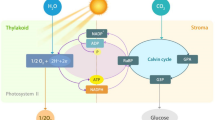Abstract.
The depolarization-activated, high-conductance ``maxi'' cation channel in the plasma membrane of rye (Secale cereale L.) roots is permeable to a wide variety of monovalent and divalent cations. The permeation of K+, Na+, Ca2+ and Ba2+ through the pore could be simulated using a model composed of three energy barriers and two ion binding sites (a 3B2S model), which assumed single-file permeation and the possibility of double cation occupancy. The model had an asymmetrical free energy profile. Differences in permeation between cations were attributed primarily to differences in their free energy profiles in the regions of the pore adjacent to the extracellular solution. In particular, the height of the central free energy peak differed between cations, and cations differed in their affinities for ion binding sites. Significant ion repulsion occurred within the pore, and the mouths of the pore had considerable surface charge. The model adequately described the diverse current vs. voltage (I/V) relationships obtained over a wide variety of experimental conditions. It described the phenomena of non-Michaelian unitary conductance vs. activity relationships for K+, Na+ and Ca2+, differences in selectivity sequences obtained from measurements of conductance and permeability ratios, changes in relative cation permeabilities with solution composition, and the complex effects of Ba2+ and Ca2+ on K+ currents through the channel. The model enabled the prediction of unitary currents and ion fluxes through the maxi cation channel under physiological conditions. It could be used, in combination with data on the kinetics of the channel, as input to electrocoupling models allowing the relationships between membrane voltage, Ca2+ influx and Ca2+ signaling to be studied theoretically.
Similar content being viewed by others
Author information
Authors and Affiliations
Additional information
Received: 29 April 1998/Revised: 20 November 1998
Rights and permissions
About this article
Cite this article
White, P., Ridout, M. An Energy-Barrier Model for the Permeation of Monovalent and Divalent Cations Through the Maxi Cation Channel in the Plasma Membrane of Rye Roots. J. Membrane Biol. 168, 63–75 (1999). https://doi.org/10.1007/s002329900498
Issue Date:
DOI: https://doi.org/10.1007/s002329900498




